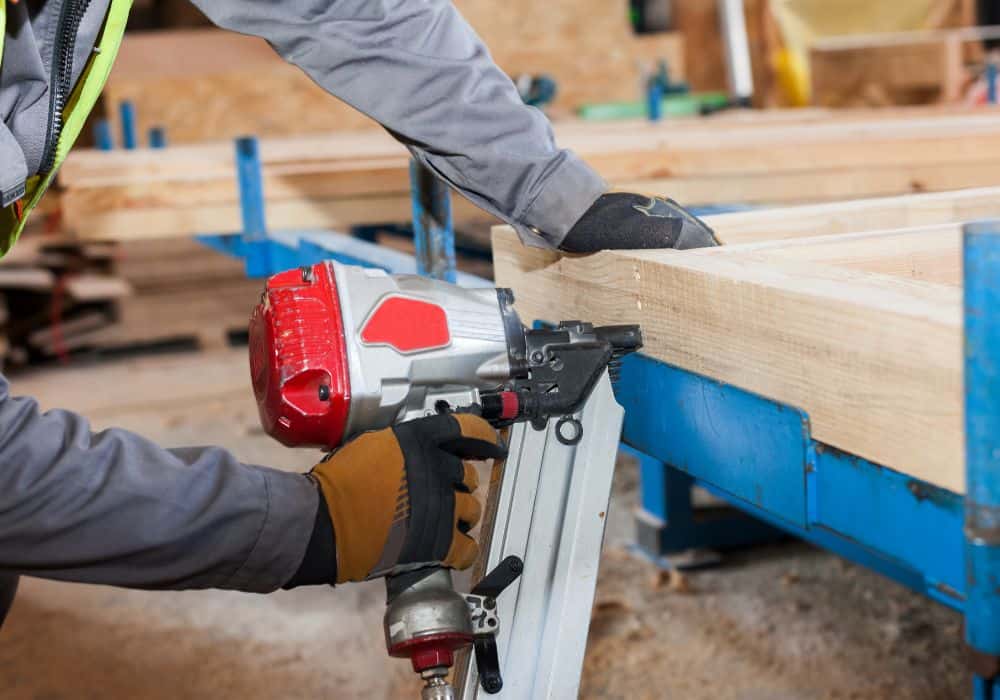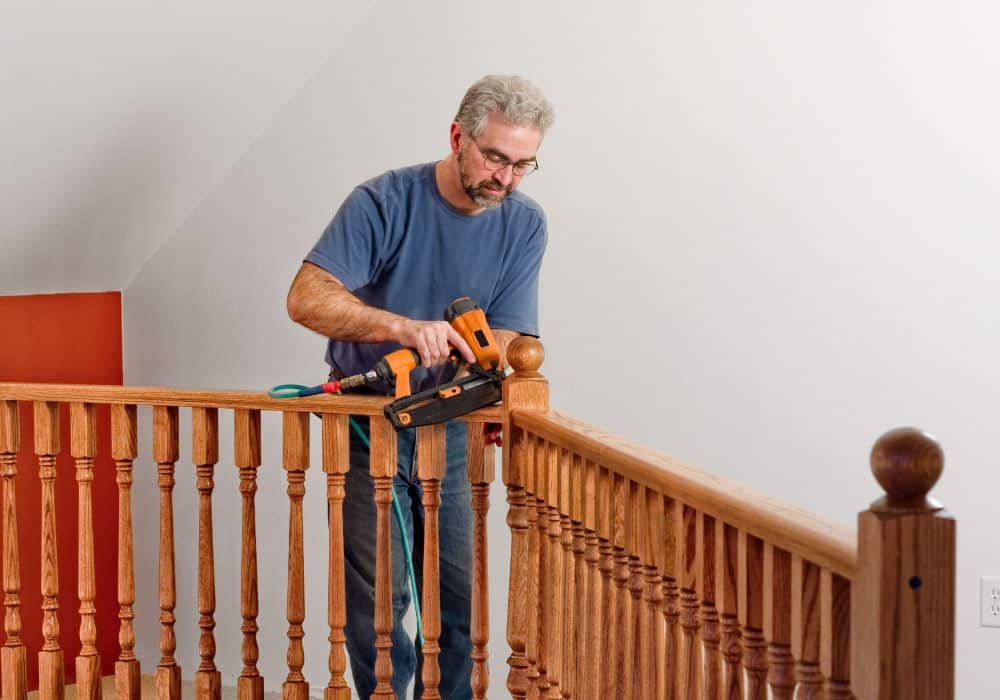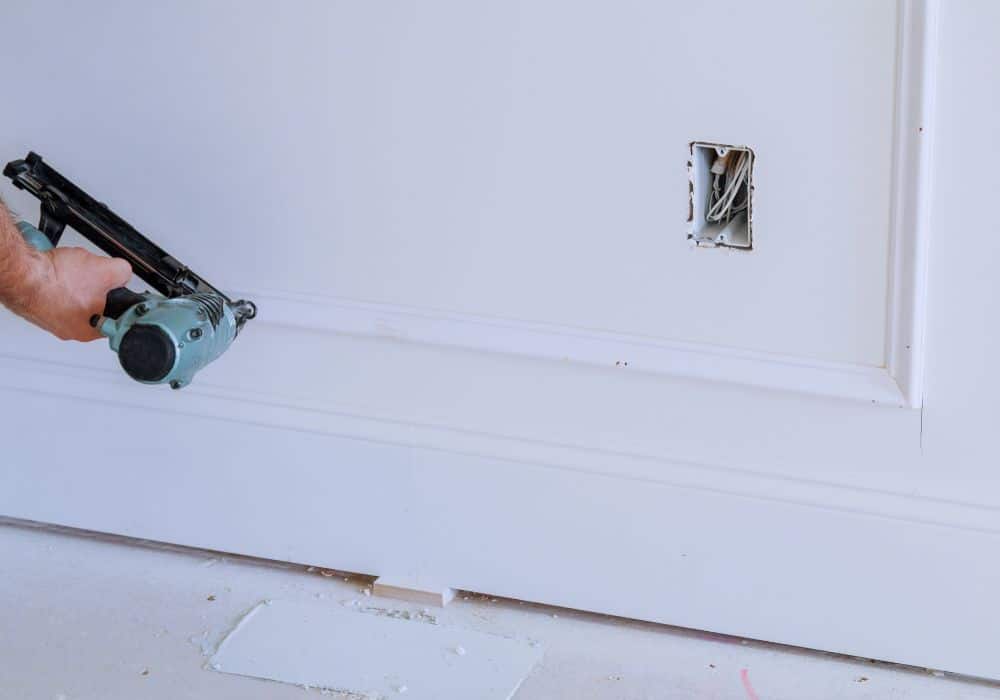If you are a homeowner or new contractor, then you know that there are a lot of things to consider when it comes to home improvement projects.
One of the most important decisions you will make is what type of tools to use. In this blog post, we’ll discuss the difference between a 21 vs. 30-degree framing nailer and help you decide which one is right for you. Keep reading to learn more!
Overview Of A 21-Degree Framing Nailer
A 21-degree framing nailer is a tool that is used to drive heavier nails. This type of nailer is typically used by carpenters and construction workers who need a stronger hold.
The 21-degree framing nailer gets its name from the angle of the magazine that it can accommodate, as it has a 21-degree collation.
Most standard nailers can only handle nails up to 2-1/2 inches, but the 21-inch framing nailer can drive 3-1/2 inch nails. This makes it ideal for projects where a strong connection is required, such as framing and siding.
Another key aspect of this nailer is that the magazine is smaller, which is ideal for tight spaces.
While the 21-inch framing nailer is a bit heavier than a standard nailer, its extra power and capacity make it an essential tool for people who work with lumber.
Overview Of A 30-Degree Framing Nailer
If you have a need for a nailer that can handle multiple projects, then a 30-degree framing nailer is a good choice.
A 30-degree framing nailer is designed for use in framing applications and holds its magazine at a 30-degree collation. It can be used for different projects, such as attaching floor joists while installing subflooring.
The angled head of the nail gun helps to ensure that the nails are driven into the wood at the correct angle, making for a stronger joint.
One of the great things about this nailer is that it can be used with various different nails. This means that you can choose the right type of nail for your project, whether you’re using hardwood or softwood.
21 vs. 30-Degree Framing Nailer Comparison

While these two framing nailers are typically interchangeable for most projects, you should consider a few differences.
1. Magazines and Nails
The 21-degree framing nailer is designed with a magazine that can hold two strips of nails of around 60 framing nails, which is less than other cordless framing nailers.
The magazines typically come in 20- 22 degree plastic strips. Some people find the plastic collation to be inconvenient as the plastic pieces fly everywhere and will require to be swept up after the project is finished.
Most standard nailers can only handle nails up to 2-1/2 inches, but the 21-inch framing nailer can drive 3-1/2 inch nails.
This makes it ideal for uses requiring a more secure hold, such as framing and siding. This nailer also features an adjustable depth control that allows the user to customize the depth of each nail.
You also need to note that this framing nailer should only be used with full-round head nails.
The 30-degree nailer is a more versatile tool than the 21-degree nailer and is perfect for different projects.
It can also shoot 2″-3-1/2″ nails, making it ideal for various uses. It has a paper strip collation which is more popular than plastic strips. However, moisture can easily damage the paper strips, so keep this in mind.
The 30-degree nailer holds up to 88 nails, which makes it better for longer projects as you will not have to reload it as often. It can accommodate clipped head nails or offset nails, so you have more variety in the types of nails you can use.
Keep in mind the framing nailer angles don’t refer to the angle the nailer shoots but the collation angles. The 30-degree framing nailer holds more nails because it is at a steeper angle than the 21-degree framing nailer.
2. Uses
A 21-degree nailer is a versatile and powerful tool that can be used for various applications. It is most commonly used for framing, decking, siding, and sheathing.
The 21-degree angle allows for thicker nails to be used, as well as long nails. This makes the 21-degree nailer ideal for when a strong bond is needed. In addition, the 21-degree nailer is less likely to split the wood, making it ideal for use with softer woods.
A 30-degree nailer is commonly used in decking, siding, and framing applications. It is also often used in woodworking and for challenging lumber applications. The unique design of the 30-degree nailer allows it to be used in multiple ways.
For example, it can be used to attach decking boards to the frame of a deck. It can also be used to install siding on the house. In addition, the 30-degree nailer can be used to create various types of wood joints. This makes it an essential tool for any serious woodworker.
3. Size

21-degree nailers are bigger and heavier than 30-degree nailers. They’re also more powerful, making them better for driving nails into harder woods. However, because it is heavier, it can be a nuisance to carry around for longer projects.
21-degree nailers are better suited for construction projects, while 30-degree nailers are more versatile and can be used for smaller projects around the home.
The 30-degree nailer is more compact and lightweight, making it easier to use in tight corners. The downside is that the 30-degree nailer isn’t as powerful as the 21-degree nailer and isn’t well suited for driving nails into hardwoods.
If you are seeking a versatile nailer that can be used for many different projects, the 30-degree nailer is the better option.
If you are looking for a nailer that can handle more challenging jobs, the 21-degree nailer is a good choice.
4. Cost
If you are leaning toward a 21-degree framing nailer, you can expect to pay more than you would for a 30-degree framing nailer.
21-degree framing nailers are generally more expensive because they offer more features and benefits than their 30-degree counterparts.
21-degree framing nailers are designed for use with thicker materials, such as lumber, and they offer a higher level of precision than 30-degree models.
As a result, 21-degree framing nailers are often the choice of professionals who need to ensure that their work is of the highest quality. However, if you’re working on a budget, a 30-degree framing nailer may be the best option.
5. Features and specifications
Both of these nailers have a rafter hook, making it convenient to carry your nailer from one place to another. Simply hook the rafter onto your tool belt or vest to transport your nailer with ease.
Another feature that these nailers have in common is the dry fire lockout system. This system prevents the nailer from firing when there are no nails left in the magazine.
As a result, it helps to reduce the risk of accidental discharge, which could cause serious injury. The dry fire lockout system is typically engaged when the magazine is empty or when the trigger is released without firing a nail.
In most cases, the lockout system can be easily disengaged by simply reloading the magazine or pulling the trigger again. However, if the lockout system becomes damaged, it may need to be replaced by a qualified technician.
Other Types Of Nailers

- 15-degree nailer
The 15- degree nailer is similar to the 21-degree nailer in that you must use nails with a full round head and it is heavier than some other framing nailers. The main difference that sets this nail gun apart is that it has a wire coil collation. They are mainly used for floor joists and wall studs.
- 28-degree nailer
The 28-degree framing nailer is made for high-speed projects. It is excellent for various types of sheathing and framing applications and uses a wired strip collation. Like the 30-degree framing nailer, the 28-degree framing nailer is compact, so it’s great for tight spaces.
Conclusion
Ultimately, deciding which type of framing nailer to purchase comes down to personal preference and the project requirements.
If you are unsure of what degree framing nailer is right for you, ask an employee at your local hardware store for their recommendation or consult multiple online reviews.
Also, remember to check your local building codes to make sure the tools you are using are compliant.
Did you find this article helpful? Let us know in the comments below!

This was very helpful. Couldn’t make up my mind on a 21° or 30° gun till I saw this. Will get the 21° . Muchas gracias